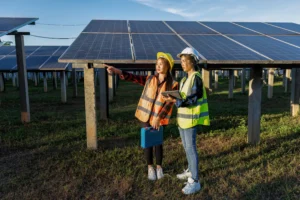The advent of 5G technology marks a significant milestone in the evolution of connectivity, promising to revolutionize the way we interact with technology and access information. With its unparalleled speed, low latency, and massive bandwidth, 5G is poised to transform various industries and drive innovation across the globe.
1. Enhanced Mobile Connectivity:
5G offers blazing-fast mobile internet speeds, enabling users to download large files, stream high-definition content, and engage in immersive experiences with minimal lag. This enhanced connectivity not only improves the user experience but also unlocks new possibilities for mobile applications and services.
5G offers blazing-fast mobile internet speeds, enabling users to download large files, stream high-definition content, and engage in immersive experiences with minimal lag. This enhanced connectivity not only improves the user experience but also unlocks new possibilities for mobile applications and services.
2. Internet of Things (IoT) Revolution:
5G’s low latency and high capacity make it ideal for powering IoT devices and applications. From smart homes and cities to industrial automation and healthcare, 5G enables seamless connectivity and real-time data exchange, driving the proliferation of IoT solutions and transforming how we interact with our environment.
5G’s low latency and high capacity make it ideal for powering IoT devices and applications. From smart homes and cities to industrial automation and healthcare, 5G enables seamless connectivity and real-time data exchange, driving the proliferation of IoT solutions and transforming how we interact with our environment.
3. Emergence of Edge Computing:
5G’s ultra-low latency capabilities pave the way for edge computing, where data processing occurs closer to the source of data generation. This enables faster response times and reduced network congestion, making it ideal for applications that require real-time processing, such as autonomous vehicles and augmented reality.
5G’s ultra-low latency capabilities pave the way for edge computing, where data processing occurs closer to the source of data generation. This enables faster response times and reduced network congestion, making it ideal for applications that require real-time processing, such as autonomous vehicles and augmented reality.
4. Empowering Remote Work and Collaboration:
The COVID-19 pandemic has accelerated the adoption of remote work and virtual collaboration tools. With 5G, remote workers can enjoy reliable, high-speed connectivity from anywhere, facilitating seamless video conferencing, cloud-based collaboration, and access to resource-intensive applications.
The COVID-19 pandemic has accelerated the adoption of remote work and virtual collaboration tools. With 5G, remote workers can enjoy reliable, high-speed connectivity from anywhere, facilitating seamless video conferencing, cloud-based collaboration, and access to resource-intensive applications.
5. Innovation in Healthcare and Telemedicine:
5G enables the delivery of high-quality, real-time healthcare services remotely, revolutionizing telemedicine and remote patient monitoring. Healthcare providers can leverage 5G connectivity to conduct virtual consultations, perform remote surgeries, and monitor patients’ vital signs with greater accuracy and efficiency.
5G enables the delivery of high-quality, real-time healthcare services remotely, revolutionizing telemedicine and remote patient monitoring. Healthcare providers can leverage 5G connectivity to conduct virtual consultations, perform remote surgeries, and monitor patients’ vital signs with greater accuracy and efficiency.
6. Advancements in Autonomous Vehicles:
Autonomous vehicles rely on fast, reliable connectivity to communicate with each other and the surrounding infrastructure. With 5G, vehicles can access real-time traffic data, receive instant updates on road conditions, and communicate with pedestrians and other vehicles, paving the way for safer and more efficient transportation systems.
Autonomous vehicles rely on fast, reliable connectivity to communicate with each other and the surrounding infrastructure. With 5G, vehicles can access real-time traffic data, receive instant updates on road conditions, and communicate with pedestrians and other vehicles, paving the way for safer and more efficient transportation systems.
7. Transforming Entertainment and Media:
5G’s high-speed, low-latency connectivity enhances the delivery of immersive entertainment experiences, such as virtual reality (VR) and augmented reality (AR). Users can enjoy seamless streaming of 4K and 8K content, interactive gaming, and immersive AR experiences on their mobile devices.
5G’s high-speed, low-latency connectivity enhances the delivery of immersive entertainment experiences, such as virtual reality (VR) and augmented reality (AR). Users can enjoy seamless streaming of 4K and 8K content, interactive gaming, and immersive AR experiences on their mobile devices.
8. Enabling Smart Cities and Sustainable Infrastructure:
5G facilitates the deployment of smart city initiatives, enabling real-time monitoring and management of critical infrastructure, such as energy grids, transportation networks, and public safety systems. By optimizing resource allocation and reducing energy consumption, 5G contributes to building more sustainable and resilient cities.
5G facilitates the deployment of smart city initiatives, enabling real-time monitoring and management of critical infrastructure, such as energy grids, transportation networks, and public safety systems. By optimizing resource allocation and reducing energy consumption, 5G contributes to building more sustainable and resilient cities.
In conclusion, the impact of 5G on technology and connectivity is profound, ushering in a new era of innovation and connectivity. From faster mobile internet speeds to transformative applications in healthcare, transportation, and entertainment, 5G is poised to reshape industries, drive economic growth, and improve the quality of life for people around the world.




